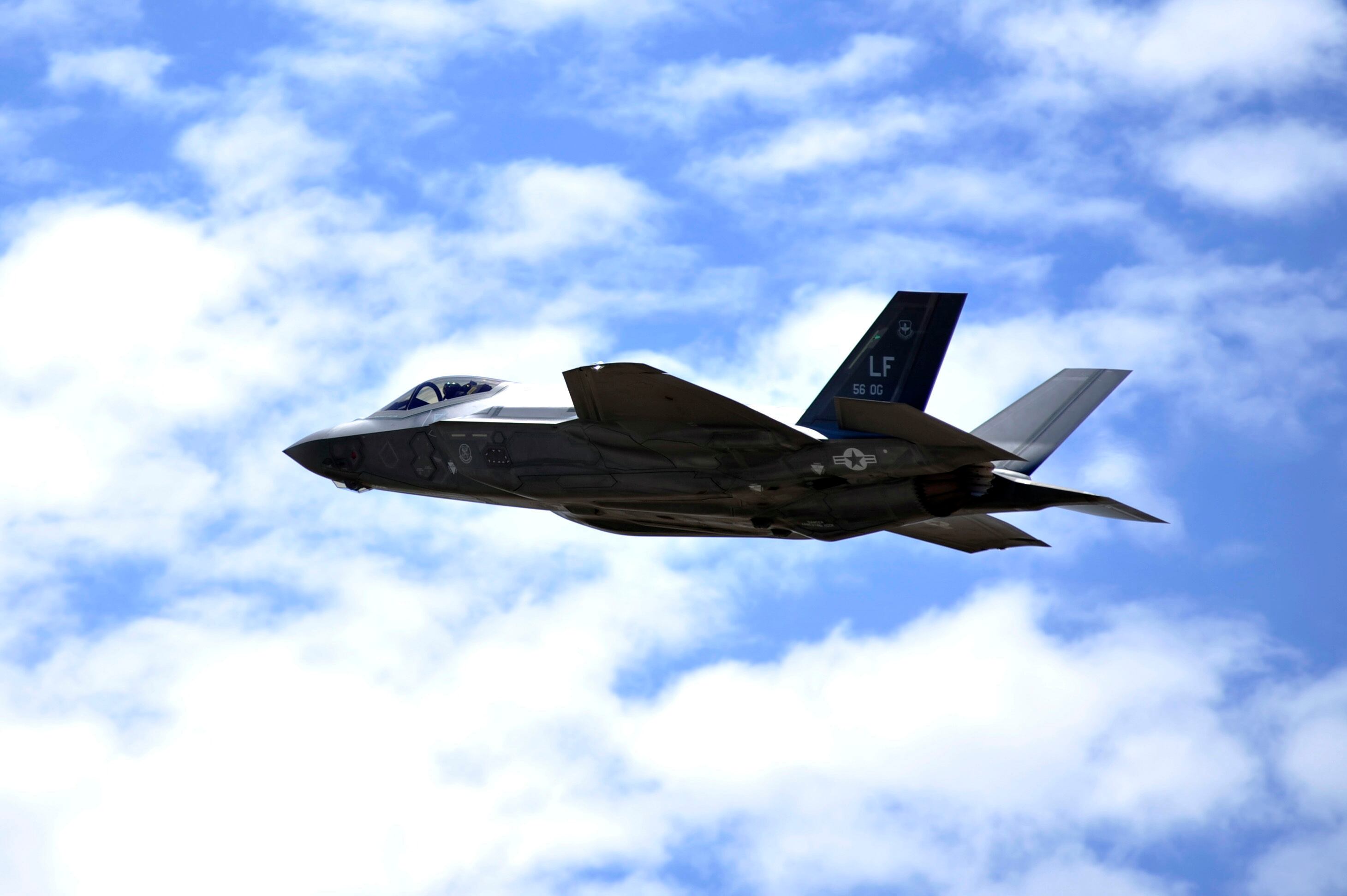WASHINGTON — A wing commander at Luke Air Force Base on Wednesday lifted an altitude restriction on F-35 flights at the Arizona base, but Air Force investigators are no closer to understanding what prompted five incidents of pilot oxygen deprivation earlier this summer.
Between May 2 and June 8, five different Luke pilots experienced symptoms similar to hypoxia, or oxygen deprivation, while conducting F-35A training flights. That prompted Brig. Gen. Brook Leonard, commander of the 56th Fighter Wing, to order a pause in flight operations in June while officials from the Air Force and the F-35 Joint Program Executive Office analyzed each incident. Although they had hoped to find a common thread linking the incidents together, no root cause has emerged.
Flight operations resumed June 21 with a number of restrictions in place, including a base-wide ban on flying the F-35 at altitudes higher than 25,000 feet. That restriction was removed Wednesday, Leonard announced.
“We have learned a lot over the past two months, and while we have yet to identify a singular cause, we have reduced potential causes for labored breathing [and] carbon monoxide ingestion, and refined our procedures and training,” he said in a statement. “We have great confidence in the F-35A and the ability and training of our pilots. We will continue to closely monitor operations and work with the Joint Program Office and the Human Performance Wing on future improvements as we move forward building the future of airpower.”
Earlier this month, Leonard told Defense News that he was considering removing restrictions on F-35 flights out of Luke.
“Once we kind of sit back down with the instructor pilots, once we sit back down with the experts and kind of analyze the data that we have, if we really haven’t found anything that pops out as causal — or if we have, and we can fix it with the mitigation [actions] that we’ve put in place and what we’ve learned so far — we’ll probably go and eliminate the 25,000-foot restriction,” he said then. “But that one needs to be determined based on the data that we still have to analyze.”
RELATED

The decision to remove the altitude restriction was based on several factors, Maj. Rebecca Heyse, spokeswoman for the 56th Fighter Wing, told Defense News. Teams at Luke completed heat stress and chemical exposure testing — basically, an evaluation of whether pilots were exposed to excessive heat or carbon monoxide on the ramp — but initial assessments showed no strong evidence of chemical factors causing contamination in the air.
Leonard also developed increased confidence as F-35 operators flew regularly over two months with only one additional incident of hypoxia-like symptoms, which were due to a faulty valve on a pilot’s mask. That event is not connected to the series of five unexplained incidents that occurred during May and June, Air Force officials have said.
The base also found success with updated pilot training and pre-flight procedures, such as increasing the minimum levels for the backup oxygen system and having pilots mask up as soon as they get to the jet, Heyse said.
Valerie Insinna is Defense News' air warfare reporter. She previously worked the Navy/congressional beats for Defense Daily, which followed almost three years as a staff writer for National Defense Magazine. Prior to that, she worked as an editorial assistant for the Tokyo Shimbun’s Washington bureau.








